TRAVELLING WITH YOUR SERVICE DOG BY TEAM DAKOTA!
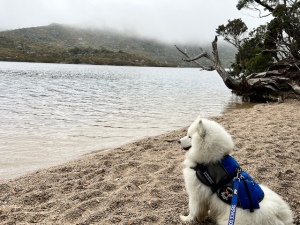
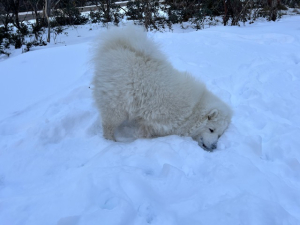
Wanting to travel somewhere but it’s too far for you to drive? Air travel with your service dog is not only possible, but it’s relatively easy once you’ve got the hang of it. I was initially very anxious but I’ve learned a lot over 10 flights and I’ll share my tips for making service dog assisted airline travel as smooth as possible.
Preparation: Getting yourself and your dog prepared is the key to making travel as easy as possible. For your first flight, set yourself some time to consider where you want to go and when and try to start your planning several months ahead to work and prepare with your trainer.
Airline approval – this is the first step and the worst of the paperwork you’ll have to deal with. Virgin have travelled with ADC teams before and they have a very fluent process with their Medical Assist. They will require emailed copies of all your service dog certification documentation, a vet certificate where your dog has been assessed as healthy enough to travel on a flight, vaccinations and they may request letters from your health care team. These can take a while to collate together but once they have all of this you are in their system and bookings in future are very smooth and easy. You’ll have a direct number to book all your service dog assisted flights rather than booking on-line as there is specific seating and processes for you and your dog.
Assessing your challenges – Talk with your trainer and discuss your concerns about travel so you can start training on any foreseeable issues. Most of the time your dog is pretty much already trained and ready to go but as a team you can work through any anxieties and concerns. In one day of travel you’ll navigate a lot of stages together including; check-in, security, waiting at the gate, boarding and placement of your dog, the flight itself, walking tarmacs, waiting for luggage, then car rental/taxi/train/pick up. But there’s a lot you can do to prepare yourselves so this can be manageable.
Working with Anxiety: I was very anxious Dakota would become unsettled and bark on the flight (she’s a Samoyed and they vocalise if they are not happy!). So to prepare I did the ADC airline simulation training in Brisbane which helped to expose us both to the aircraft platform and provided me with more confidence in both Dakota’s and my own ability to cope with this new setting.
We also did a ‘dry run’ a few days prior to flying at the airport, including going through security check. Yes, it was stressful but I was really glad I did this prior as it was one less ‘new thing’ to navigate on the day of travel. It also helped me to see some areas I needed to tweak. I found the Brisbane security check-in very busy and crowded so I realised it was better for me on the first travel to ask for a private room for the pat down so I wasn’t so overwhelmed by the crowds. On the day of travel then we had 2 female staff members allocated to us and they were really lovely and helped me to stay calm and focused to the task at hand. For Dakota the practice run gave her exposure to the environment and her own pat down (the staff love being able to sink their fingers in her long thick soft fur!). It also gave me some practice for using commands to help Dakota settle as the airport environment is very over-stimulating with scents, sounds and movement.
Policies – Familiarise yourself with your airlines service dog policies and ADC’s. Check if your departure cities have a dog toilet in the terminal and check which gates they are nearby and write it all down to take with you. Your dog will need to be wearing their jacket with ID
and have all your documents with you at all times. The security check-in process often varies in different states and airports, but you are not ever to be forced to leave your service dog.
Security Check in – This stage can vary at different airports but (when available) go to the assistance lane and when they see you, they will immediately call ahead for more staff to come and help you through. I’ve tried about every option for security scanning and you’ll figure out which best suits your situation. You can opt for a wand screen or pat down option rather than scanner, (just note that the wand is very sensitive and detects shoes and bra wires so you may have to go to a full pat down anyhow). Pat downs are quite thorough and all over your body and done just off to the side but still in the stream of the check-in process so are quite busy so you may prefer to ask for a private room. I have been offered that Dakota can walk past a scanner and they will hold her on the other side until I’m scanned. Because she can see me and we go straight through I’ve done this a few times but you don’t have to if you’re not comfortable with this. You can take your dog’s jacket off and put it through the scanner or just have them do a pat down of your dog all over. I choose to do the latter as taking her jacket off signifies to her that she’s off-duty which I don’t want here. Plus, she is very good at holding still for pat downs and the staff love doing it!
Assistance – The staff are there to help you! Don’t hesitate to ask for any help you need. They are trained for service dogs and often find it a real novelty to work with one. Once you are at the boarding gate introduce yourself to the staff prior. Board early when they call for the assisted boarding so you have time and space to get set up. The staff will check in if you need any help as you settle into your seat.
What to pack – You get a cabin luggage both for yourself and your dog. Select your bag type and how many by what you can manage to carry for the day, remembering you need a hand free for your dog. I take a back pack plus a small bag that can connect onto my big luggage with wheels so it’s easy to manage as I travel alone. You’ll need all your documentation, pee mats, placement mat, water, a lead that can connect to the base of the cabin chair and your dog that works as a seat belt. I bought the ones that are for the car to secure around the back seat head rest. It forms a loop with a snap lock buckle that’s perfect for the base of airline seats which can vary in where and how thick they are. Always take extra pee mats and a full clean up kit just in case there is an accident. Depending how long you are travelling for, you may choose to pack your dog’s dry food or organise to pick some up in a pet store at your arrival. I recommend pre-organising this as some states have different food available and you don’t want to be running around multiple areas trying to find it.
For yourself, make sure you have your own food, snacks and drinks and pack things so they are easily accessible for you. If you are sensitive to noise and stimulation I highly recommend taking noise cancelling headphones and pre-download any meditation/music/entertainment that helps to keep you calm. Take an eye mask if you’d like to sleep on the plane.
Placement of your dog in the aircraft – this is just like you do at PAT and at different cafes, and seating arrangements. The more practice prior the easier this will be for you as a team, especially on moving platforms such as trains and buses which are excellent preparation for the motion of flying. Dakota is considered a large dog and she could fit in both business and economy class areas without issue. You need to place a puppy-pee mat down first, then the service dog mat. This is easier if you put it down before you move your dog into the area. Then use your buckle strap to secure them in whilst still allowing them some room to re-settle or turn around. This will require you to get down low to the ground to snap this in so ask for assistance if you can’t access it.
Seating arrangements in cabin – In economy you’ll be placed behind business class in a row with more foot room for your dog and your dog will have the window seat floor area. You’ll be in the middle seat and another passenger in the isle (unless you’re lucky enough to have this empty). That passenger has no idea until they arrive at their seat that they are near a service dog. Out of curtesy I offer them the use of my de-lint brush as my dog has long white hair and some could fly around. So far, they have always been friendly and unconcerned about having a dog nearby but you’ll need to be aware that your dog stays on their placement mat and doesn’t move into the other passenger’s area at all. Make sure their buckle length ensures they can’t reach too far, especially if you need to leave them to go to the toilet.
Take off and Landing – these are the two times the aircraft noise and vibration is the loudest for you dog. Getting them used to these sensations and noises is best done through practice on buses, trains, ferries etc. This also assists them to learn to lie down and settle on a vibrating platform. Most of the time they will rest or sleep for the duration of the flight. If your flight has a short runway where you have a steeper take-off or landing, the inertia can cause your dog to slide a bit so gripping onto their hardness can help to them.
Business vs Economy Class: I’ve flown 6 flights economy and 4 business class. With the larger aircraft, they both have about the same amount of floor space for your dog. (note that regional smaller flights may have a lot smaller areas and this is practiced on the Aviation training). You can still end up with a crying baby close to you on either one (yes, I’ve had it on both!). Business class gives you a lot more personal space as they are 2 seaters so no one is right next to you. It’s also much easier to access you cabin luggage during flight with no one in the aisle. You pay for it but you are well looked after with wonderful service, drinks and food (the wine can be very free flowing so be cautious if you’ll be driving when you land!). For me, this extra service and space helps me to ease into the travel much better as my brain is pretty much overloaded by the time I board!! Also business class allows you to access the nearby toilet reserved for those front rows only so you won’t leave your dog for more than a few minutes as you don’t have to walk all the way to the back and wait in line whilst leaving you dog alone with the aisle passenger. You also get access to the lounges prior to boarding and again, this is quieter and has more space and you’re less likely to be approached by curious strangers, but not all areas have a Virgin lounge (Hobart and some regional areas don’t). In my opinion they are both excellent options but if I book a fair way ahead so the price is reasonable, I’ll take business class for the personal and psychological space is provides. BTW – for both options you only pay for one seat not two.
Selecting your flight – Consider what flight duration you can manage and also think how long your dog would be able to travel without toileting. Knowing your dog’s routine with sleep and toileting can help you to select the best flight times to keep them comfortable. Sometimes flights won’t match up with these needs, so you’ll need to practice toileting on command and conduct fluid and meal reduction prior. If you have connecting flights, check prior if the airport has a dog toileting facility. If not and you have time you can go outside but you’ll have to go through security check again, but this is great practice for you both too! At worst, if your dog needs to urinate on the flight, you are advised to take the pee mat to the aircraft toilet and place it on the floor for them to use. If your dog has an accident in the cabin, you have your clean up kit and extra pee pads. I book a fair bit ahead to ensure I can get direct flights which are 3-4 hours duration and each time with Dakota and there’s been no troubles.
A few extra tips –You book everything with Virgin via their Medical Assistance phone number and email system which makes things easier. You need to give at least 72 hours for new bookings and it depends on availability of these seats.
Unfortunately you can’t do your 48 hour online check-in prior – the system will come up with an error when you try. On the day of travel skip the lines and go to the priority check in and show both yours and the dog’s ID and they will check you in manually to give you a paper boarding pass and process your bags.
A tip when flying economy is to ask the flight attendant if you can access the business class toilets so you don’t have to leave your dog as long. They will often say yes or may offer to sit with your dog whilst you’re in the toilet so they are less anxious when you’re away.
If you see the pilots on your way in or out, make sure to stop and say thank-you to them! They have the discretion to approve or not approve you being on the flight on the day so let’s show our appreciation!
Car rental at your destination– if you need to hire a car at your destination book this in advance. It’s more expensive to pick up at the airport rather than the city centre office but weigh up the pros and cons of the ease of this for you both after a long day of prep and flying. Check online for the hire company’s service dog policies when you’re shopping around for the best deals as you should be exempt from cleaning fees (most of the staff won’t even know their policies on this and tell you that you have to clean all the hair or else get an extra cleaning fee!). I always follow up with an email or phone to the company to give my documents and advise them I am travelling with a service dog but this often seems to get lost in the system and upon arrival they can be surprised to see a dog with you. Have all your documents ready to show again. I always pack a seat protector and something that picks up hair from fabric as a curtesy to keep the car as clean as possible.
Being Approached – Yes, it happens everywhere as a team, but at airports you really do stand out and people will ‘ooo and ahhh’ over your beautiful dog! Look over Liz’s blog on dealing with the public and have your lines and F O cards prepared. I’ve tried large headphones and keeping my eyes down, sitting in little corners out of the way, plus using bigger patches on Dakota’s jacket to warn not to distract, but people still come up and ask about her and to pat her etc. I try and take it in my stride and remember that they are thrilled to see a dog and they don’t mean to be intrusive but sometimes just need some polite reminders of boundaries. Other than being fascinated by her cuteness, they often ask me ‘what does she do?’ and I answer “she is trained to help me with my disability”. This seems to work well most of the time to remind them that she is working and I have a personal disability I may not want to disclose. I’m often happy enough for them to talk and ask about Dakota but I prefer not to talk about my personal circumstances to strangers and the majority will follow my cues with this.
Whilst I’ve never been questioned about having a dog by any person or by airport security, always have all of your documents with you at all times ready.
The Pros of travel with a service dog –
Dakota is an amazing service dog and travelling with her is a joy. She is my buddy through the whole travel experience and grounds me when I’m starting to feel anxious which prevents my symptoms from escalating. Whilst some flights are relatively quiet, some others we meet some really lovely people along the way that makes the whole travel experience that much richer. Because of Dakota I’ve been able to tick off some big bucket list items including visiting Cradle Mountain in Tasmania, Uluru in the red centre and taking her to play in the snow in Victoria for her 4th birthday. It hasn’t all been easy in any way or form, but it has been rewarding. Life can start to be just about dealing with your disability day-to-day, but when we travel, we create new experiences, meet new people and enjoy the wonderment of our beautiful Australian landscape together. My health team are really happy that I travel now with her and see it as part of my healing and recovery journey. Dakota seems to love it too. I know I couldn’t do it without her.
TEAM DAKOTA
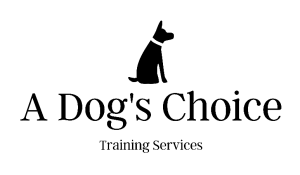
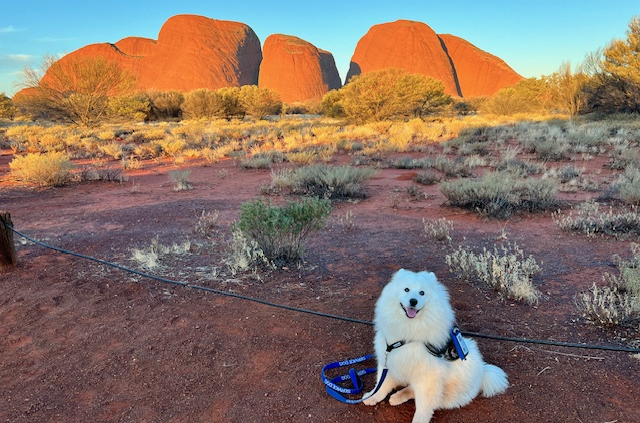
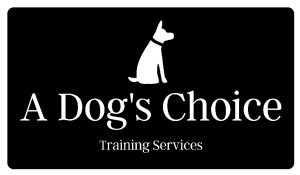
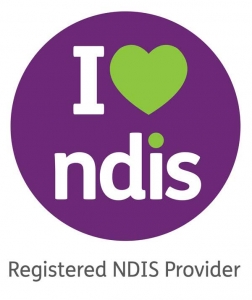


Thank you Team Dakota. Reading your story makes me feel better about possible future travel.